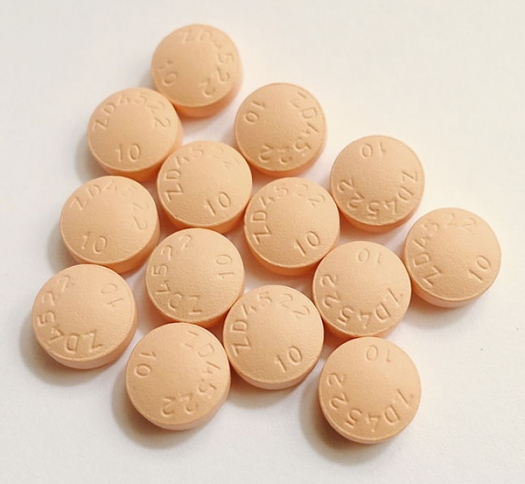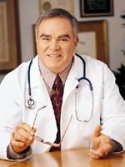Revised treatment guidelines released in November 2014 by the American College of Cardiology (ACC) and the American Heart Association (AHA) could easily double the number of people taking Lipitor, Zocor, Crestor, Pravachol, and other statins. Just imagine the windfall for the companies that make these medications, which already generate more than $15 billion in annual sales in the US alone – more than all professional sports combined! Big Pharma has reason to celebrate for years to come, because statin drug manufacturers received the gift that keeps on giving: tens of millions of additional lifelong customers.
With these new guidelines, you don’t have to have a history of heart disease to “require” a statin. You don’t even need a high cholesterol level. Diabetes, obesity, and other risk factors for heart attack and stroke are now enough to “qualify” 44 percent of American men and 22 percent of women for a lifetime of statin dependency.
Number Needed to Treat
It’s easy to get taken in by the glowing statistics on statin drugs, how they save lives and reduce risk of heart attack by 30 percent. But as Mark Twain once said, “There are three kinds of lies: lies, damned lies, and statistics.” That’s why one of my favorite metrics for illustrating the utility of any medical intervention is “number needed to treat” (NNT). It simply tells you how many patients must be treated with a medication, surgery, or other medical procedure for one person to benefit.
For example, the NNT for headache relief within two hours for sumatriptin (Imitrex), a popular medication for migraines, is four. In other words, four patients would have to take this drug for one person to experience relief. When IV magnesium is given in the emergency room to patients in the throes of a severe asthma attack, one in three improves to the point that hospitalization is not required. Therefore, the NNT is three.
The ideal NNT is one, which would mean the therapy works for everyone. However, the higher the NNT, the less beneficial the treatment. An NNT above 40 is a crapshoot.
Few People Benefit
Many doctors believe statin drugs are helpful for “secondary prevention” for patients with serious cardiovascular disease who have already suffered a heart attack or stroke. This is the only group (besides Big Pharma, of course) ever shown to benefit. But even in this high-risk group, the NNT for statin drugs to save one life over five years is 83 – so high that it’s worthless. Exercise, diet, and other lifestyle changes have a much lower NNT and are far safer than these drugs.
Most of the tens of millions of people these new guidelines target as appropriate candidates for statin prescriptions, however, are essentially healthy. They’ve never had a heart attack, stroke, or even been diagnosed with heart disease. As such, their likelihood of being helped by a statin is virtually nonexistent. According to a 2013 study published in the British medical journal BMJ, the NNT for the prevention of one heart attack or stroke in patients with a 20 percent or higher risk of developing heart disease over 10 years is 140. As for reducing risk of death, they’re no help at all. None! That’s not a crapshoot – that’s fraud.
But it gets worse. Under the new recommendations, the treatment threshold for statins is even lower, reduced from a 10-year risk of 20 percent to 7.5 percent; stroke risk is also factored in. This means that more and more healthy people will begin taking statin drugs, the odds of benefit will plummet, and the NNT will climb into the thousands. Bottom line, statins can’t prevent heart attacks in healthy people or save the life of someone who isn’t going to die – which is why I’m convinced that the push for medicating millions with statins is just for the money.
Statin Drugs Cause Disease
Considering the toxicity of these drugs, clearly more people will be harmed than helped. The list of side effects is long and scary. A minimum of 18 percent of statin users report adverse effects, and one in five stop taking their medications, usually because of diffuse and sometimes debilitating muscle pain, weakness, and fatigue.
Many of statins’ damaging effects are less obvious and either go unnoticed or are chalked up to other medical conditions. For instance, when older patients experience memory loss or develop cataracts – known complications of these drugs – these concerns are usually attributed to age rather than the drugs.
Statins also raise the risk of diabetes, a far more serious risk factor for heart disease than high cholesterol – particularly for postmenopausal women, whose likelihood of being diagnosed with diabetes increases by 71 percent! These drugs are also linked with liver damage, amnesia, confusion, sexual dysfunction, mood disorders, heart failure, rhabdomyolysis (complete muscle breakdown), and some types of cancer. And because statins block the synthesis of coenzyme Q10, an essential factor in the production of cellular energy, every user is harmed, many seriously.
Winners and Losers
Although most cardiologists and physicians will blithely jump on the statin bandwagon, not everyone is so enthusiastic. Harvard researchers Paul Ridker and Nancy Cook have expressed doubts as to the accuracy of the ACC/AHA risk calculator, stating it overestimates heart disease risk – and thus numbers of potential statin prescriptions – by 75-150 percent.
Some question the validity of the statin research, which was conducted and paid for by drug manufacturers who have a sordid reputation for manipulating data to optimize study results. Others have noted conflicts of interest and financial ties between some members of the panel who wrote the guidelines and drug companies that stand to benefit – not to mention the longstanding financial support of the ACC and AHA by the pharmaceutical industry.
The clear winner here is Big Pharma. The losers are the trusting patients who dutifully fill their prescriptions. There’s only one person who can protect you from this drug scam and its risks, and that person is you. As Nancy Reagan famously quipped, you can “Just say no!”
To learn more, visit Dr. Whitaker's website.
References
Abramson J, et al. Should people at low risk of cardiovascular disease take a statin? BMJ. 2013;347:f6123.
Ridker PM, et al. Statins: new American guidelines for prevention of cardiovascular disease. Lancet. 20 Nov 2013;doi:10.1016/S0140–6736(13)62388-0.
Stone NJ, et al. 2013 ACC/AHA guideline on the treatment of blood cholesterol to reduce atherosclerotic cardiovascular risk in adults. J Am Coll Cardiol. 2013 Nov 12;doi:10.1016/j.jacc.2013.11.002.
Reprinted from Health & Healing, January 2014, Vol. 24, No. 1. Used with permission.



